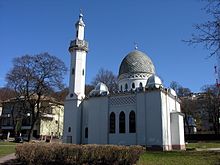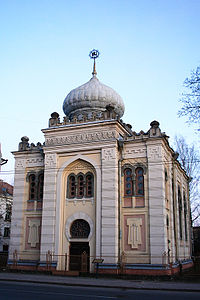Religion in Lithuania
[1] There are smaller groups of Orthodox Christians, Evangelical Lutherans, members of Reformed churches, other Protestants, Jews and Muslims as well as people of other religions.The center of Greek Catholic life in Lithuania is the Basilian Monastery and Church of the Holy Trinity in Vilnius.When they returned home, they would oftentimes use their right of patronage to confiscate Catholic churches and give them to pastors, convert their serfs either to Lutheranism or Calvinism.However, Protestantism in Lithuania Proper eventually lost ground as it failed to secure the support from the local clergymen and were at odds with one another, which weakened their positions in the country.Lutheranism in Lithuania dates back to the 16th century, when it came mainly from the neighbouring German-controlled areas of Livonia and East Prussia.The parish network covered nearly all of the Grand Duchy, with district centers in Vilnius, Kedainai, Biržai, Slucke, Kojdanove and Zabludove later Izabeline.The majority of Prussian Lithuanians living in East Prussia and in Memelland (since 1945 the Klaipėda Region of Lithuania) belonged to the Evangelical Church of the old-Prussian Union.The medieval Grand Duchy of Lithuania of the Polish–Lithuanian Commonwealth allowed Muslims, notably the Crimean Tatars to settle in the lands in the south.[25] There are communities of Jews of Lithuanian descent around the world, especially in Israel, the United States, South Africa, Zimbabwe, Brazil and Australia.A small community remains in Trakai, which has preserved the Turkic Karaim language and distinctive customs, such as its traditional dish called "kibinai", a sort of meat pastry, and its houses with three windows, one for God, one for the family and one for Grand Duke Vytautas.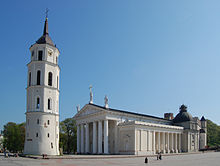
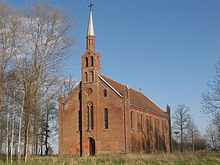
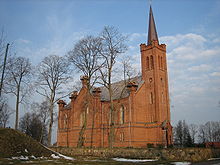



CatholicismEastern OrthodoxyLutheranismCulture of LithuaniaHistoryPeopleLanguagesMythologyCuisineFestivalsLiteratureTelevisionCinemaWorld Heritage SitesSymbolsCoat of armsNational anthemSt. Casimir's CathedralVilniusWorld Heritage SiteLithuanian census of 2021LithuaniaChristianityCatholic ChurchLutheransReformedProtestantsMuslimssecular stateChristmasEasterŠilalė districtLazdijai districtKalvarijaRietavasVisaginasTatarsCatholicOrthodoxOld BelieversEvangelical LutheransEvangelical ReformedSunni MuslimBaptistsfree churchpersonsJudaicGreek CatholicsKaraitesVilnius CathedralChristianCatholic Church in LithuaniaChristianization of LithuaniaRussian EmpireSoviet UnionHill of CrossesŠiauliaiGreek CatholicPrussiaPolandReformationright of patronageRadziwiłłChodkiewiczRoman Catholic ChurchLithuania ProperLutheranGermansMemel territoryremoval of the GermanPrussian Lithuanianevangelical churchesEvangelical Lutheran Church of LithuaniaLivoniaEast PrussiaPrussian LithuaniansKlaipėda RegionEvangelical Church of the old-Prussian UnionWest GermanyWorld War IIethnic GermanBiržaiLithuanian Evangelical Reformed ChurchWorld Communion of Reformed ChurchesWorld Reformed FellowshipUnited MethodistsBaptist UnionMennonitesCathedral of the TheotokosRussian minorityAlgirdasMaria of VitebskAnthony, John, and EustathiusSt. Paraskevi ChurchRussian Orthodox Churchdiocese in the countryPatriarch BartholomewIngrida ŠimonytėArmenians in LithuaniaArmenian Apostolic ChurchOriental Orthodox ChurchEastern OrthodoxKaunas MosqueIslam in LithuaniaGrand Duchy of LithuaniaPolish–Lithuanian CommonwealthCrimean TatarsVytautasLithuanian TatarsLithuanianMuslimLithuanian JewsChoral Synagogue of VilniusNazi occupationentirely eliminatedthe HolocaustsynagoguesyeshivotIsraelUnited StatesSouth AfricaZimbabweBrazilAustraliaRabbinicKaraite JudaismKaraite

